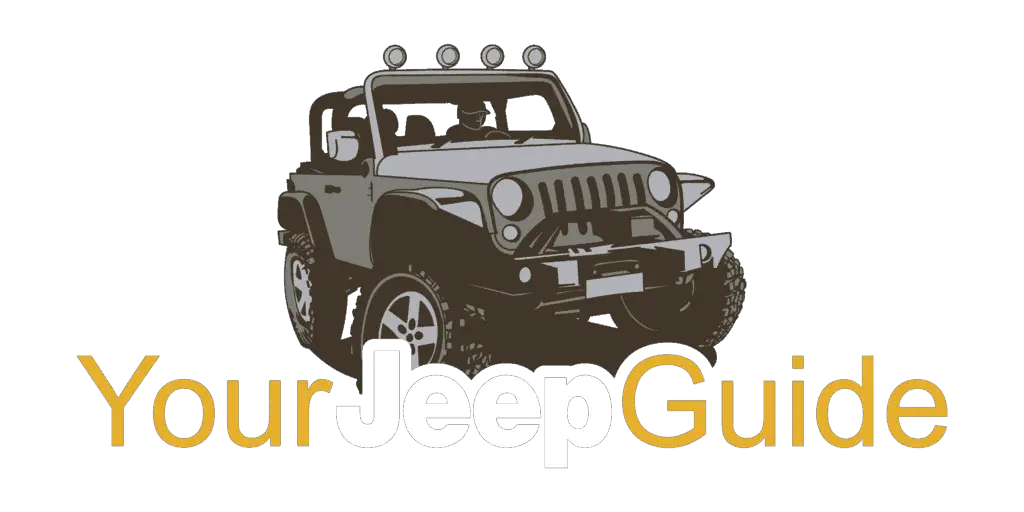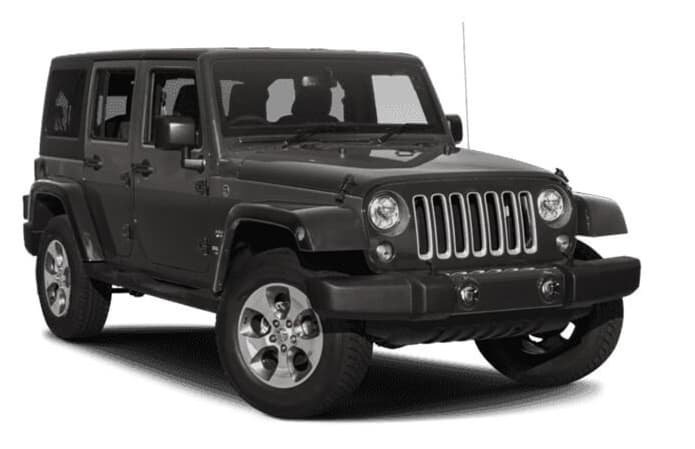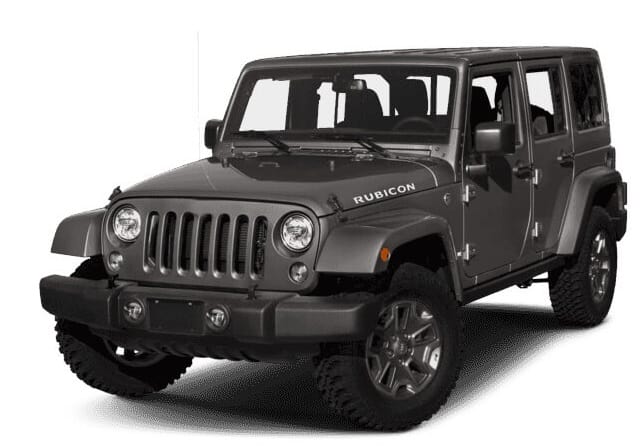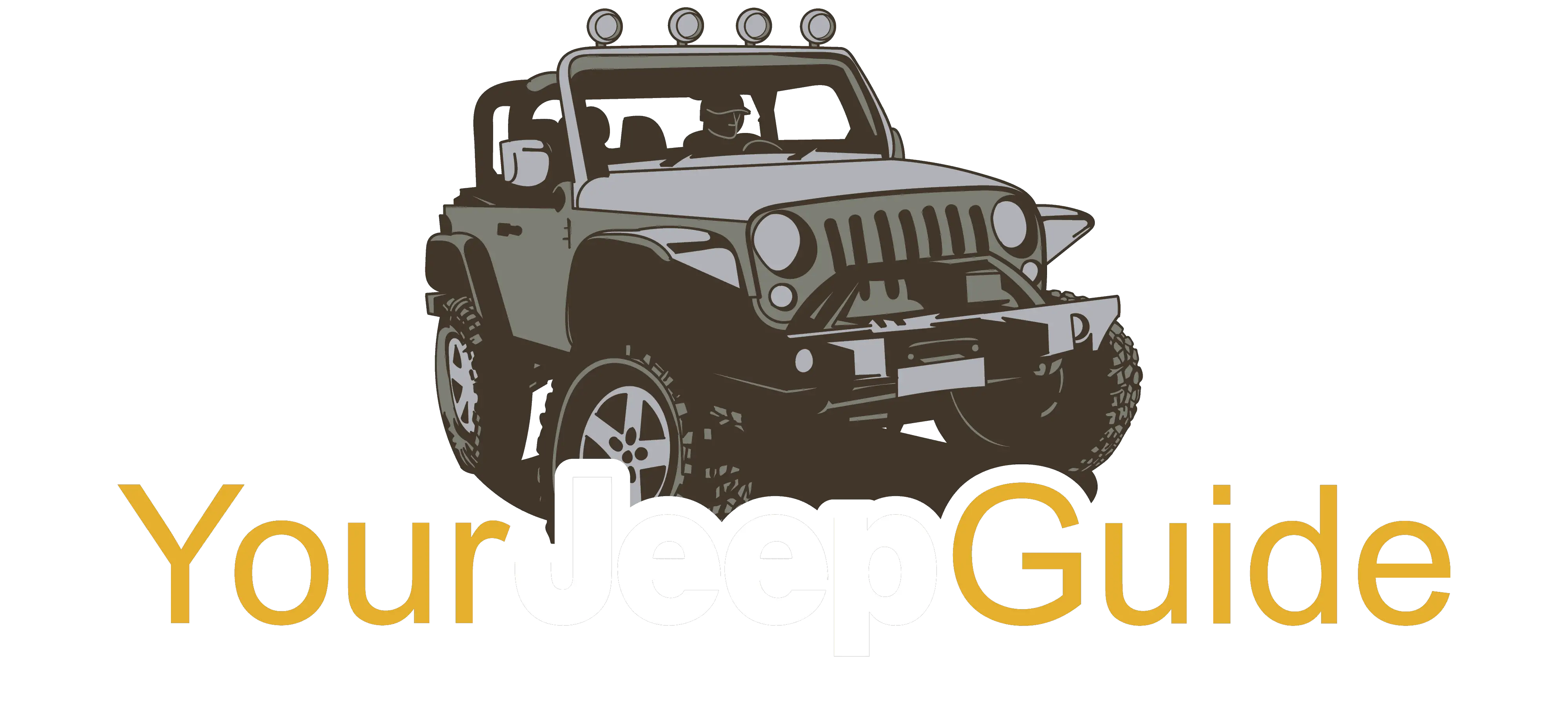Shopping for a new Jeep Wrangler but finding it difficult to decide between the Jeep Wrangler Sahara and the Jeep Wrangler Rubicon? Let me help you make an informed decision!
The new generation Wrangler models has seemingly endless options, and often the choices can become overwhelming.
so, understandably, you may be looking for some guidance when it comes to finding the right one to suit your needs. With this guide, we’re here to help make the right decision an easier one.

TL;DR: Sahara vs Rubicon (Wrangler JL)

JL Sahara

JL Rubicon

Pros
JL Sahara
More on-road friendly optional equipment
Selec-Trac automatic 4×4 system
Veriety of fuel-efficient engine options
JL Rubicon
Variety of fuel-efficient engine options
Outstanding off-road capabilities
Heavy-duty front and rear axles
Cons
JL Sahara
Available only in 4-door
More of an on-road version of the Wrangler JL
JL Rubicon
Not very practical for daily driving
Best For
JL Sahara
Somebody looking for a solid daily driver Jeep that can still provide excellent off-road capabilities.
JL Rubicon
Somebody looking for that hardcore Jeep off-road experience right off the showroom floor.
Key Features: Jeep Wrangler Sahara vs Jeep Wrangler Rubicon
JL Sahara vs. JL Rubicon
Compare by tapping or clicking below!

MSRP
JL Sahara
$38,890
JL Rubicon
$38,940
Engine(s)
JL Sahara
3.6L V6
2.0L I-4Turbo
3.0L EcoDiesel V6
JL Rubicon
3.6L V6
2.0L I-4Turbo
3.0L EcoDiesel V6
Horsepower
JL Sahara
3.6L V6: 285 hp
2.0L Turbo I4: 270 hp
3.0L EcoDiesel V6: 260 hp
JL Rubicon
3.6L V6: 285 hp
2.0L Turbo I4: 270 hp
3.0L EcoDiesel V6: 260 hp
Torque
JL Sahara
3.6L V6: 260 lb-ft
2.0L Turbo I4: 295 lb-ft
3.0L EcoDiesel V6: 443 lb-ft
JL Rubicon
3.6L V6: 260 lb-ft
2.0L Turbo I4: 295 lb-ft
3.0L EcoDiesel V6: 443 lb-ft
Transmission(s)
JL Sahara
6-speed Manual
8-speed Automatic transmission
JL Rubicon
6-speed Manual
8-speed Automatic transmission
Axles
JL Sahara
Dana 30 Front Dana 35 Rear
JL Rubicon
Dana 44 Front and Rear
Tire Size
JL Sahara
32″
JL Rubicon
33″
4WD System
JL Sahara
Command-Trac Part Time 4×4
Select Trac Full Time 4×4
JL Rubicon
Rock rails -Trac Part-Time 4×4
Gear Ratio
JL Sahara
Low Range Ratio: 2.72:1
JL Rubicon
Low Range Ratio: 4:1
Differential
JL Sahara
Conventional Differential
JL Rubicon
Tru-Lok locking Differential
Both Have leather wrapped steering wheel
MSRP
Everyone is price conscious these days, as they should be. It’s important to get the right price for the right vehicle.
Each of these Jeeps is comparable in price, depending on the options you choose, with the base two-door Jeep Wrangler Rubicon coming in slightly less than the four-door only Jeep Wrangler Sahara.
Engines
Both the Jeep Wrangler Sahara and the Jeep Rubicon have the same available engine options. The EcoDiesel, however, is only available in the four-door Rubicon and is not an option in the two-door Jeep Wrangler models.
Horsepower
Horsepower is a reference to how much power an engine produces and directly reflects performance. Horsepower relates to speed.
If you’re looking to get up to a certain speed quickly, horsepower is what does that.
The Jeep Wrangler Rubicon and the Jeep Wrangler Sahara both have the same engine options that both produce the same power, barring the EcoDiesel Rubicon Unlimited.
Torque
Torque, on the other hand, is a measure of rotational force and is viewed as the vehicle’s strength.
Torque is the measurement you want to consider if planning to use your new Jeep Wrangler off-road or for towing and hauling.
Again, because both the Jeep Wrangler Sahara and the Jeep Wrangler Rubicon can have the same engine options, torque will be identical, except (again) for the Ecodiesel Rubicon Unlimited option.
Transmissions
As of 2020, the Jeep Wrangler JL’s are the only Jeeps left that offer a manual transmission.
As many manufacturers stray from manual transmissions, Jeep continues to provide them in their JL’s because they are often the choice of off-road enthusiasts who prefer to select the gear they want to be in during certain low speed, off-road situations.
Both the Jeep Wrangler Rubicon and the Jeep Wrangler Sahara can be equipped with either a 6-speed manual transmission or an 8-speed automatic.

Axles
Dating back to the first Jeep Wrangler YJ’s in 1987, Jeep has used three versions of solid axles, the Dana 30, 35, and 44.
The Dana 30 and 35 axles, front and rear, found in the Jeep Wrangler Sahara are axles providing drivability suitable for daily driving with a mix of some light off-roading.
The Dana 44 axles in the front and the rear of the Jeep Wrangler Rubicon, however, are beefier. They’re both stronger and lighter than previous generations and more suitable for heavier off-road applications.
Differentials
Without getting too technical, differentials are an important aspect when it comes to off-roading.
The conventional differentials equipped in the Jeep Wrangler Sahara directs power to the wheel with the least amount of traction.
If one wheel is slipping, the differential will transfer power to that wheel to help it gain traction.
Most vehicles are equipped with conventional differentials, and while not the most popular when it comes to off-roading, they are extremely effective in on-road situations where a wheel may begin to slip, such as snow or ice.
On the other hand, only the Rubicon has Tru-Lok Locking differentials.
Locking differentials are the preferred choice of off-road enthusiasts because, with the push of a button, you can lock the differential, meaning the axles will turn at the same speed. Locking differentials allow the operator more control over what they need the vehicle to do in certain situations.
When not locked, the differential then acts like a conventional one.
Tire Size
Because the Jeep Wrangler Rubicon is marketed as an off-road version of the Jeep Wrangler JL, it makes sense that it would be factory equipped with slightly more off-road capable tires than the Jeep Wrangler Sahara.
While the difference between a 32” tire and a 33” tire may seem insignificant to most people, it can mean all the difference to those who intend to use their Jeep for more heavy off-road applications, especially when considering the more aggressive tread pattern.

4WD System: The Rock-Trac 4×4 system found in the Jeep Rubicon is a system build with 4-wheel drive enthusiasts in mind.
The off-road specific transfer case delivers the torque and control needed in heavy off-road situations together with locking front and rear differentials and electronic sway bar disconnect.
On the other hand, the two available 4WD systems, the Command-Trac and the Selec-Trac, in the Jeep Wrangler Sahara combine off-road capability while maintaining on-road performance.
The biggest difference between these two available systems is that the Selec-Trac has an automatic option that lets your Jeep automatically switch from 2WD to 4WD as needed.
Key Differences Between Sahara and Rubicon (Wrangler JL)
At their core, the Sahara and Rubicon are slightly different versions of the same vehicle, both being Wranglers, in this case, JL’s.
They share much of the same styling, interior design, with very subtle differences, and Jeep’s famous off-road prowess.
The off-road capabilities separate the two; however, the Rubicon is marketed as the more off-road capable Jeep of the two.
Differences in the four-wheel-drive systems, tire sizes, axles, and gear ratios separate these two from each other.
That is not to say that the Sahara isn’t a capable off-road vehicle; it only means that one may be a better choice over the other depending on how you intend to use it.
The other difference between the two SUVs is the door configuration. While the Sahara is only available in a four-door version, the Rubicon comes both two and four-door options.
In case you don’t want to drive with doors, you can easily remove them. However, you will need door hangers to do so. Are door hangers necessary for a Jeep? They can provide a convenient and practical solution for storing your doors while you’re out on the trail or enjoying an open-air driving experience.
Advantages of a JL Sahara
- Selec-Trac 4×4 system has a 4-wheel automatic option, allowing the vehicle to change from 4-wheel to 2-wheel as needed.
- Command-Trac 4×4 system provides a capable off-road system that still functions well on road.
- While fuel mileage is comparable and very similar, the more on-road-friendly options (like the smaller, more highway-friendly tire) in the Sahara should provide slightly better fuel mileage.

Advantages of a JL Rubicon
- Designed for the more serious off-road enthusiast.
- Available in both 2-door and 4-door configurations.
Use-Case Comparison: Rubicon vs Sahara
The Sahara and Rubicon share much of what makes Jeep products great, but some aspects can separate one from the other.
Jeep has incorporated its world-famous off-road capabilities into both, and both the Sahara and Rubicon have options that take advantage of that, so buyers should not have any concern if they intend to use either off-road.
How you intend to use your Jeep may be what makes one option better than the other.
If you’re looking for a hardcore off-roader, right from the factory the Rubicon might be the right choice. On the other hand, if you want to have some off-road fun, but need a Jeep that is still good for daily driving, the better choice might be the Sahara.
Daily Driver
If you’re going to couple your off-road adventure with a commuter vehicle, the Sahara could be considered the better option.
The two available 4WD systems, the Command-Trac and the Selec-Trac, in the Sahara, combine off-road capability while maintaining on-road performance.
While both the Rubicon and Sahara Jeep Wrangler comes with leather wrapped steering wheel.
The Sahara also comes equipped with an on-road-friendly tire that is smaller and less aggressive than the tire that comes equipped on the Rubicon, leading to slightly better fuel economy and a quieter, smoother ride.
While the Sahara doesn’t sacrifice Jeep’s famous off-road capabilities, it comes better equipped for a combination of on and off-road driving.

Snow/Ice Drivability
There is no doubt that the off-road strong Rubicon can put those capabilities to good use when plowing through some fresh snow. The strong 4×4 system is sure to get the Rubicon through the toughest of snowstorms.
Where the Sahara does shine, however, is with its available Selec-Trac 4×4 system that offers an automatic option, allowing the Jeep to switch from 2WD to 4WD as needed.
This option comes in handy when daily driving and facing ever-changing road conditions. You can set it and forget it and have the confidence that the Sahara is going to push through any road condition.
Off-Road Capability
The Rubicon is designed as an outstanding off-road version of the Wrangler JL, and it shows.
The beefier, aggressive off-road tires combined with a four-wheel-drive system with more capable low gear ratios, locking front and rear differentials, and electronic sway bar disconnect set the Rubicon apart from the Sahara when it comes to off-road capability.
With slight differences in ground clearance (10.8” in Rubicon, 10” in Shahara) as well as in approach and departure angles (42.2 degrees/32.3 degrees in Rubicon and 41.7 degrees/31.8 degrees in Sahara), it quickly becomes obvious which one of the two is better suited for more hardcore off-road applications.
Final Thoughts: Rubicon vs Sahara
As it should be when considering any vehicle, the choice between the Sahara and the Rubicon is going to come down to personal needs and wants.
You may be looking for a Jeep that can handle some adventure, but still, be comfortable and practical enough to use a daily driver or commuter vehicle.
Or you may be looking for a factory vehicle that is capable of some serious off-roading without needing any modifications and extra time and money spent on it.
Whatever the case may bcce, you cannot go wrong with either one of these Jeep’s and there is no bad choice if based on personal needs.
Daily Driver: JL Sahara | JL Rubicon
Snow/Ice Drivability: JL Sahara | JL Rubicon
Off-Road Capability: JL Sahara | JL Rubicon
Before making a decision between Jeep Wrangler Sahara and Jeep Rubicon, consider your options for vehicle financing to ensure you make a financially sound choice.

People Also Ask
Just because we’ve done what we can to cover you when it comes to making an informed decision when buying your next Jeep doesn’t mean you don’t still have questions.
Here are some of the most common ones we get asked.
Because it is designed as a slightly more aggressive off-road vehicle, the Rubicon does sit slightly higher than the Sahara, with a ground clearance of 10.8 inches as opposed to 10 inches even in the Sahara.
The Jeep Sahara first debuted in 1988 as a new jeep model for Jeep’s continuing YJ generation.
The Jeep Rubicon was first introduced during the TJ generation. This Jeep generation began in 1996.
Other Jeep Related Guides
Who Worked on This?

Brian
Editor
A master of organization, Brian helps keep everything running smoothly for Your Jeep Guide.
No Jeep yet but we’re working on that!

Cory
Writer
Cory loves his XJ and frequently thrashes it through the hills. He’s constantly fixing something.
“What fenders?”
Check Us Out!
